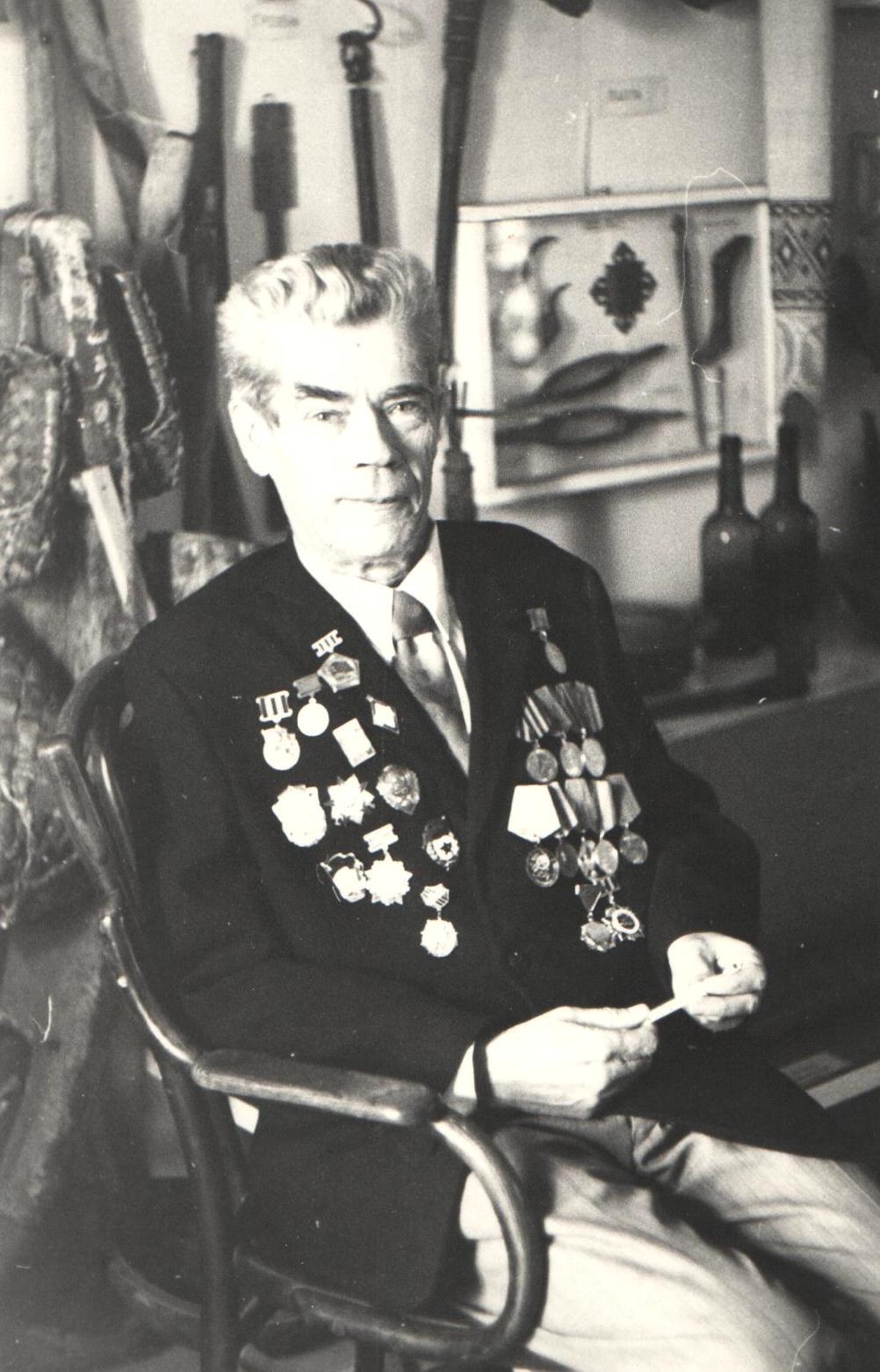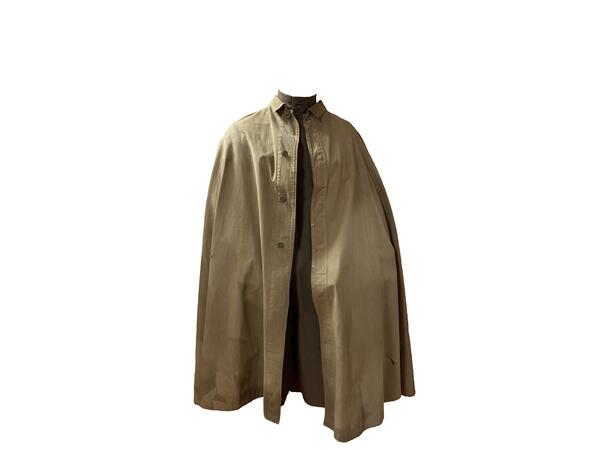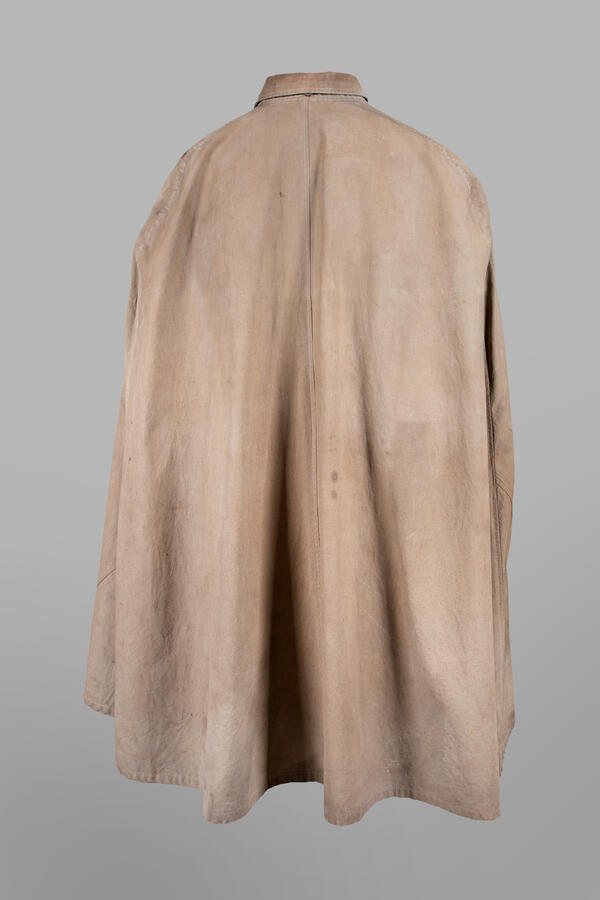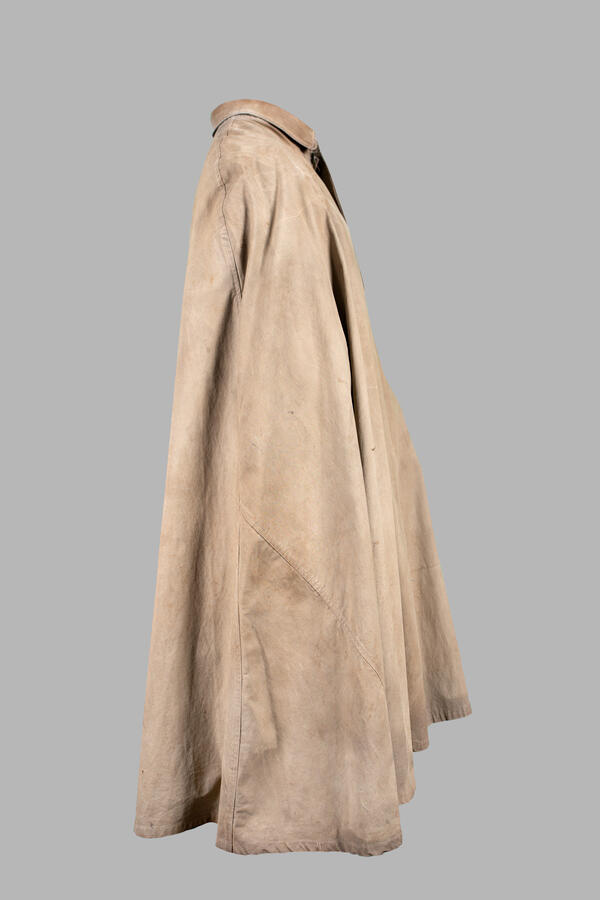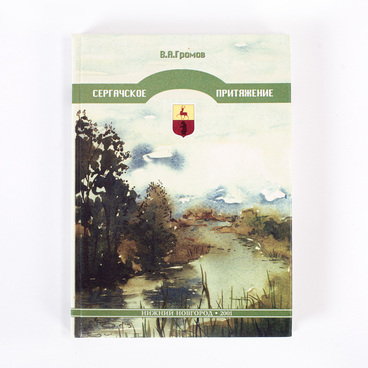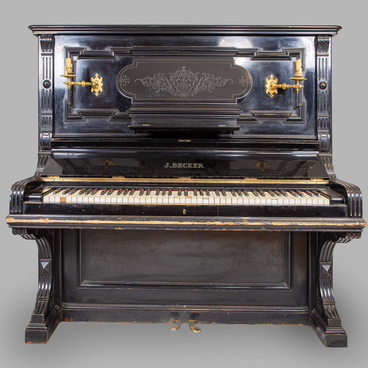A groundsheet is an attribute of the uniform of a Russian soldier. It can be used as a raincoat, a tent, a disguise, a stretcher for the wounded and even a raft. It first appeared in the Imperial Army in the 19th century, however, similar cloak raincoats were present as early as the Petrine Era.
When folded, the groundsheet was fastened behind the back to a rolled greatcoat. The advent of groundsheets made the soldiers’ camp life much easier, since earlier, according to the rules, tents were transported in a separate wagon train at a distance of up to 30 kilometers from the regiment, so the soldiers often had to spend the night in the open.
The establishment of the USSR brought little change to the design of pre-revolutionary groundsheets. It was a canvas sheet measuring 180×180 cm with holes at the corners, and pegs and ropes came with it for fixing the tent. If necessary, several canvases could be fastened together to form a big camping tent.
The groundsheet from the collection of the Museum of Local Lore belonged to its founder, Lieutenant Vyacheslav Andreyevich Gromov. He was born in the town of Sergach, Nizhny Novgorod Governorate, in 1919, and after graduating from a pedagogical college, he worked as a primary school teacher.
In times of the Great Patriotic War, Vyacheslav Gromov graduated from the Leningrad Military Engineering School, participated in the demining of the Finnish Mannerheim Line, and liberated China as part of the Guards Red Banner Tank Army.
After the war, Gromov returned to Sergach and worked at the school for 30 years. He fulfilled his dream of creating a museum of local lore in his native town, which later received the title of a national museum and was awarded a diploma by the regional culture department. For his achievements in pedagogy, Vyacheslav Gromov was awarded the honorary titles “Excellence in Public Education” and “Honored School Teacher of the RSFSR”.
In 1996, Vyacheslav Andreyevich Gromov’s book “Magnetism of Sergach” was published, where he presented the results of many years of his career as a local historian. Vyacheslav Gromov was an active member of the district branch of the Council of Veterans of War, Labor and Law Enforcement. On February 22, 1968, he was awarded the title of “Honorary Townsman”.
When folded, the groundsheet was fastened behind the back to a rolled greatcoat. The advent of groundsheets made the soldiers’ camp life much easier, since earlier, according to the rules, tents were transported in a separate wagon train at a distance of up to 30 kilometers from the regiment, so the soldiers often had to spend the night in the open.
The establishment of the USSR brought little change to the design of pre-revolutionary groundsheets. It was a canvas sheet measuring 180×180 cm with holes at the corners, and pegs and ropes came with it for fixing the tent. If necessary, several canvases could be fastened together to form a big camping tent.
The groundsheet from the collection of the Museum of Local Lore belonged to its founder, Lieutenant Vyacheslav Andreyevich Gromov. He was born in the town of Sergach, Nizhny Novgorod Governorate, in 1919, and after graduating from a pedagogical college, he worked as a primary school teacher.
In times of the Great Patriotic War, Vyacheslav Gromov graduated from the Leningrad Military Engineering School, participated in the demining of the Finnish Mannerheim Line, and liberated China as part of the Guards Red Banner Tank Army.
After the war, Gromov returned to Sergach and worked at the school for 30 years. He fulfilled his dream of creating a museum of local lore in his native town, which later received the title of a national museum and was awarded a diploma by the regional culture department. For his achievements in pedagogy, Vyacheslav Gromov was awarded the honorary titles “Excellence in Public Education” and “Honored School Teacher of the RSFSR”.
In 1996, Vyacheslav Andreyevich Gromov’s book “Magnetism of Sergach” was published, where he presented the results of many years of his career as a local historian. Vyacheslav Gromov was an active member of the district branch of the Council of Veterans of War, Labor and Law Enforcement. On February 22, 1968, he was awarded the title of “Honorary Townsman”.

